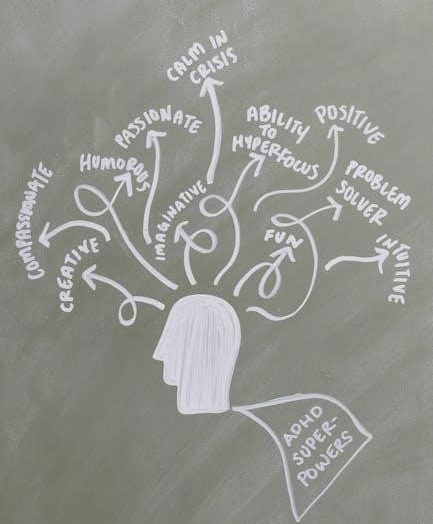Understanding word problem keywords is essential for solving math problems effectively. These keywords act as clues, helping identify the correct operations needed, such as addition, subtraction, multiplication, or division. Recognizing these terms improves problem-solving skills and boosts confidence in mathematics.
Importance of Identifying Keywords in Word Problems
Identifying keywords in word problems is crucial for determining the correct mathematical operation to use. Keywords such as add, total, or divide provide clear clues about whether addition, subtraction, multiplication, or division is required. Recognizing these terms helps students understand the problem’s structure and reduces errors. For example, words like more or increase often signal addition, while difference or left may indicate subtraction. Mastering keyword identification builds a strong foundation for solving word problems confidently and accurately. It also enhances problem-solving skills by teaching students to focus on relevant information and ignore distractions. Over time, this strategy becomes second nature, making math more approachable and enjoyable.
Overview of Common Keywords for Basic Operations
Common keywords in word problems help indicate the mathematical operation required to solve them. For addition, words like add, sum, total, more, and increase are often used. Subtraction is typically signaled by terms such as difference, less, left, or remaining. For multiplication, keywords include times, groups, each, or product. Division is often indicated by words like share, divide, split, or equal parts. Understanding these keywords provides a clear guide for selecting the appropriate operation. This approach simplifies problem-solving and helps students decode mathematical scenarios effectively. By recognizing these terms, learners can tackle word problems with greater accuracy and confidence.
Addition Keywords in Word Problems
Addition keywords indicate when to add numbers in word problems. Common terms include sum, total, more, increase, and combined. Recognizing these clues helps solve problems accurately.
Key Words Indicating Addition
Addition is often indicated by specific keywords in word problems. Words like sum, total, more, increase, and combined typically signal that addition is required. For example, phrases such as “altogether,” “in all,” or “how many in total” also point to addition. These keywords help identify when two or more quantities need to be added together to find the solution. Recognizing these terms is crucial for accurately interpreting and solving math problems. By focusing on these indicators, students can better understand when to use addition in word problems, leading to improved problem-solving skills and confidence in mathematics.
Examples of Addition Word Problems
Addition word problems often involve scenarios where quantities are combined. For example, “Tom has 5 apples and gets 3 more from his friend. How many apples does Tom have now?” Here, the keyword more indicates addition. Another example: “A bookshelf has 8 books on one shelf and 5 on another. How many books are there in total?” The phrase in total signals addition. These problems teach students to identify keywords like sum, altogether, or combined and apply addition to find solutions. Practicing with real-world examples helps build proficiency in recognizing and solving addition-based word problems effectively.

Subtraction Keywords in Word Problems
Subtraction keywords help identify when to subtract in word problems. Common terms include difference, minus, less than, fewer, and remaining. These words signal the need to find the result of a reduction.
Key Words Indicating Subtraction
Identifying subtraction keywords is crucial for solving word problems accurately. Common terms that indicate subtraction include difference, minus, less than, fewer, and remaining. These words often signal the need to compare quantities or find the result after a reduction. For example, phrases like “how much less” or “how many fewer” clearly point to subtraction. Additionally, words like subtract and take away directly imply the operation. Recognizing these keywords helps students translate word problems into mathematical expressions, ensuring they apply the correct operation. Mastery of these terms enhances problem-solving skills and builds confidence in tackling real-world math challenges.
Examples of Subtraction Word Problems
Subtraction word problems often involve scenarios where a quantity is reduced or compared. For example, “If Sarah has 15 apples and gives 7 to her friend, how many apples does she have left?” Here, the keyword “left” indicates subtraction. Another example: “A bookshelf has 20 books, and 8 are borrowed. How many books remain?” The word “remain” signals subtraction. In “Tom has $25 and spends $12 on toys, how much money is left?”, “left” again cues the operation. These examples demonstrate how keywords like “difference” or “fewer” guide the problem-solving process, making it easier to translate words into mathematical expressions.

Multiplication Keywords in Word Problems
Key words like “times,” “groups of
Key Words Indicating Multiplication
Identifying multiplication keywords is crucial for solving word problems accurately. Common terms that indicate multiplication include “times,” “groups of
Examples of Multiplication Word Problems
Here are some practical examples of multiplication word problems:
“A bookshelf has 5 shelves, and each shelf holds 8 books. How many books can the bookshelf hold in total?” (Keywords: groups of, each)
“A farmer plants 12 seeds in each row and has 7 rows. How many seeds does the farmer plant?” (Keywords: times, multiplied by)
“A bakery sells 9 muffins in each box and prepares 6 boxes for a sale. How many muffins are there in total?” (Keywords: each, total)
“A student has 4 packets of pens, with 10 pens in each packet. How many pens does the student have?” (Keywords: groups of, product)
These examples demonstrate how multiplication keywords like “groups of

Division Keywords in Word Problems
Division keywords like “divided by
Key Words Indicating Division
Specific keywords in word problems often signal the need for division. Terms like “divided by
Examples of Division Word Problems
Division word problems often involve distributing items equally. For example, “If 18 apples are divided equally among 6 baskets, how many apples are in each basket?” Here, “divided equally” signals division. Another example: “A bookshelf has 30 books to be shared among 5 shelves. How many books per shelf?” The phrase “shared among” indicates division. Additionally, “There are 24 cookies to be split into groups of 4. How many groups can be made?” uses “split into groups” to denote division. Recognizing these keywords helps set up the correct operation, making problem-solving more straightforward and accurate. These examples highlight how division keywords guide the mathematical approach needed to find solutions.
Strategies for Identifying Keywords
Identifying keywords requires careful reading and practice. Use keyword charts, highlight key terms, and create flashcards to memorize common words for addition, subtraction, multiplication, and division. This boosts problem-solving skills and confidence in math.
How to Recognize Keywords in Word Problems
Recognizing keywords in word problems involves careful reading and understanding of specific terms that indicate mathematical operations; Start by identifying action words like add, subtract, multiply, or divide. Phrases such as “total of”, “difference between”, or “product of” also provide clues. For addition, look for words like sum, more, or combined. Subtraction keywords include less, decrease, or remaining. Multiplication is often indicated by times, groups of, or product. Division keywords include share, distribute, or divided by. Underline or highlight these terms to focus on the operation required. Practice with sample problems and keyword charts to improve accuracy and speed in identifying the correct operation.
Using Keyword Charts for Better Understanding
Keyword charts are valuable tools for identifying and organizing mathematical operations in word problems. These charts typically list keywords alongside their corresponding operations, such as addition for words like sum or total, and subtraction for terms like less or difference. By visually mapping keywords to operations, students can quickly recognize the required calculation. Many PDF resources, such as keyword cheat sheets, provide pre-designed charts that simplify learning. Teachers and students can also create custom charts tailored to specific problem types. Regular use of these charts enhances problem-solving skills and reduces errors. Over time, this visual aid helps build familiarity with keywords, making it easier to apply them in various mathematical contexts. Keyword charts are especially helpful for visual learners and those needing structured guidance.

Common Challenges in Identifying Keywords
Identifying keywords in word problems can be tricky due to misleading words and complex phrasing. Students often overlook key phrases or confuse similar-sounding terms, leading to incorrect operations.
Misleading Words in Word Problems
Misleading words in word problems often confuse students, leading to incorrect operation choices. For example, words like “total” or “combined” suggest addition, but context may require subtraction. Similarly, “increase” or “more” might imply addition, but sometimes multiplication is needed. These words can obscure the actual mathematical relationship, making it harder to identify the correct operation. Overlooking small details or assuming meanings based on similar-sounding words can also lead to errors. For instance, “altogether” might imply addition, but “altogether different” has no mathematical meaning. Teaching students to underline keywords and analyze context carefully can help mitigate these challenges. Additionally, using keyword charts and practicing with diverse problems can enhance their ability to distinguish between misleading and genuine cues.
Overlooking Key Phrases
Overlooking key phrases in word problems is a common challenge, leading to incorrect operation selection. Students often focus on isolated words rather than the entire context, missing critical clues. For example, phrases like “more than” or “twice as many” indicate multiplication, but without context, they might seem ambiguous. Additionally, some problems embed keywords within complex sentences, making them harder to identify; Teaching strategies like underlining key phrases and creating keyword charts can help students avoid oversights. Encouraging them to read problems carefully and highlight important terms improves their focus. Regular practice with diverse word problems also enhances their ability to recognize and interpret key phrases accurately, reducing errors and building confidence in problem-solving skills. Contextual understanding is crucial for accurate operation identification.

Real-World Applications of Keyword Strategies
Keyword strategies are invaluable in real-world problem-solving, aiding in tasks like budgeting, cooking, and work-related calculations. They simplify identifying operations, enhancing efficiency and accuracy in daily math applications.
Using Keywords in Everyday Problem Solving
Recognizing keywords in word problems is a practical skill that extends beyond the classroom. In everyday life, identifying terms like “total,” “increase,” or “divide” can help with tasks such as budgeting, cooking, or scheduling. For instance, when adjusting a recipe, understanding keywords like “double” or “triple” ensures accurate measurements. Similarly, in financial planning, spotting words like “minus” or “remaining” aids in calculating expenses or savings. These strategies enhance problem-solving efficiency, making daily decisions more straightforward. By mastering keyword identification, individuals can apply mathematical reasoning to real-world scenarios, improving their overall problem-solving abilities. This skill is invaluable for tackling challenges effectively and confidently in various aspects of life.
Enhancing Math Vocabulary for Better Comprehension
Expanding your math vocabulary is crucial for effectively understanding and solving word problems. By familiarizing yourself with key terms and phrases commonly used in math problems, you can better interpret the context and required operations. PDF resources, such as keyword cheat sheets and guides, provide structured lists of words associated with addition, subtraction, multiplication, and division. These tools help learners recognize patterns and clues embedded in word problems. For instance, words like “total,” “difference,” or “product” signal specific operations, reducing confusion. Regular practice with these resources strengthens your ability to decode problems and apply the correct mathematical strategies. Over time, this enhanced vocabulary leads to improved comprehension and confidence in tackling complex word problems across various subjects and real-world scenarios.
PDF Resources for Word Problem Keywords
Discover free PDF downloads offering word problem keyword cheat sheets and comprehensive guides. These resources outline keywords for addition, subtraction, multiplication, and division, enhancing problem-solving skills.
Free PDF Downloads for Keyword Cheat Sheets
Various educational websites offer free PDF downloads for keyword cheat sheets tailored to word problem solving. These resources provide lists of keywords associated with addition, subtraction, multiplication, and division, along with examples of how they appear in problems. Some PDFs include visually organized charts to help students quickly identify the correct operation. Additionally, these downloads often feature tips for using keywords effectively and practice exercises to reinforce learning. Teachers and students can easily access these materials online, making them a convenient tool for improving math problem-solving skills. By referencing these cheat sheets, learners can develop a stronger understanding of how to approach word problems with confidence.
Recommended PDF Guides for Word Problem Solving
Several recommended PDF guides are available to enhance understanding of word problem keywords and improve problem-solving skills. These guides often include comprehensive lists of keywords associated with addition, subtraction, multiplication, and division, along with real-world examples. Many PDFs feature step-by-step strategies for identifying keywords and applying the correct mathematical operations. Some guides also offer visual charts and diagrams to simplify complex concepts. Additionally, these resources frequently include practice exercises and quizzes to reinforce learning. Educators and students can benefit from these well-organized and accessible materials, which are designed to build confidence and proficiency in tackling word problems effectively. By utilizing these guides, learners can develop a robust foundation in math vocabulary and problem-solving techniques.
Mastering word problem keywords enhances math skills and problem-solving confidence. Utilize PDF guides for strategy insights and practice exercises. Effective keyword recognition leads to better problem-solving abilities.
Identifying and understanding word problem keywords is crucial for solving math problems accurately. Keywords such as “sum,” “total,” “difference,” and “product” indicate specific operations like addition, subtraction, multiplication, or division. Recognizing these terms helps determine the correct mathematical approach. PDF guides and cheat sheets are valuable resources for mastering these keywords, offering clear charts and examples. By learning and practicing these strategies, students can improve their problem-solving skills and gain confidence in tackling various word problems. Effective use of keywords enhances math comprehension and ensures accurate solutions.
Final Tips for Mastering Word Problem Keywords
Mastering word problem keywords requires consistent practice and a strategic approach. Start by identifying common keywords for each operation, such as “sum” for addition or “difference” for subtraction. Use keyword charts or cheat sheets as visual aids to reinforce learning. Practice solving problems regularly, focusing on understanding the context of each keyword. Review mistakes to avoid misinterpreting terms like “total” or “remaining,” which can change the operation needed. Encourage the use of PDF guides or worksheets for additional practice. By combining these strategies, learners can develop a strong foundation in identifying and applying keywords, leading to greater confidence and accuracy in solving word problems.
